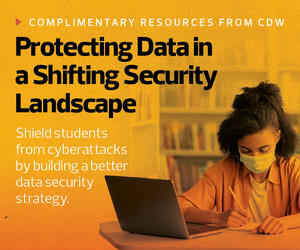Fact: Neither the Cloud nor On-Premises Storage Is the Silver Bullet
Ransomware is devastating because attackers can effectively hold data hostage and force K–12 school districts to pay exorbitant sums. If these demands aren’t met, hackers could sit on that encrypted data forever, distribute it or even destroy it.
But, should you pay? Probably not. In its “State of Ransomware 2021” report, Sophos reveals that organizations that paid a ransom recovered just 65 percent of their data on average — while only 8 percent got back everything they’d lost. There’s also no guarantee that attackers won’t retain copies of your data. The decryption process is often unreliable and painstakingly slow. Finally, surrendering payment is legally dubious in many cases, as that could fund further criminal activity.
Overall, no approach is perfect when dealing with ransomware; even expert opinions remain split. That’s why retaining multiple data backups (in multiple locations) is critical to surviving these common attacks. And no backup solution, local or cloud, is perfect, which means that school districts should proceed cautiously. Before doubling down on any solution, IT administrators should do a deep, holistic evaluation of their security and goals.
Fact: Schools Are Legally Mandated to Provide Strong Data Protections
School systems oversee a wide variety of personal data on students, teachers and staff. Digital systems also let students and parents access grades, assignments and other key resources such as documents, media and more. Schools must protect any private data while judiciously delegating access via authorization and authentication.
Thanks to federal regulations such as the Family Educational Rights and Privacy Act, public-facing data (which has low sensitivity) requires fewer protections than tightly controlled data (such as personally identifiable information). Schools must decide what data fits into which box and plan their storage accordingly.
DIVE DEEPER: Understand FERPA, CIPA and other student data privacy laws.
Fact: Local Storage Alone Is Costly, a Hybrid Solution Might Work Best
While pure local storage may seem best, there are costs to consider. Districts must acquire and maintain their own servers and the facilities to house them. This model isn’t inherently scalable. Data expansion means adding capacity, which many schools can’t handle financially or physically. This happens as districts grow, and as time passes. However, local storage is lightning-fast when performance is critical.
Alternatively, schools can choose cloud storage. A vendor manages this storage externally, lends out capacity at a cost and provides nearly limitless scalability. Students and teachers can access essential information from almost anywhere, which is increasingly vital for hybrid learning. However, admins have limited configuration options, and districts must understand their security posture within an online ecosystem.
Click the banner to discover how one district migrated its storage to the cloud.













